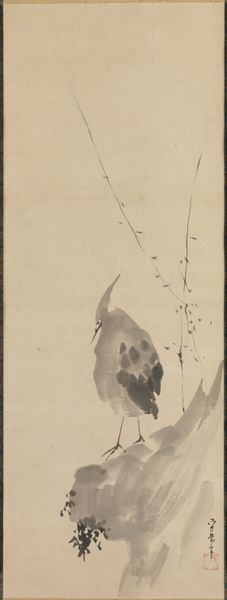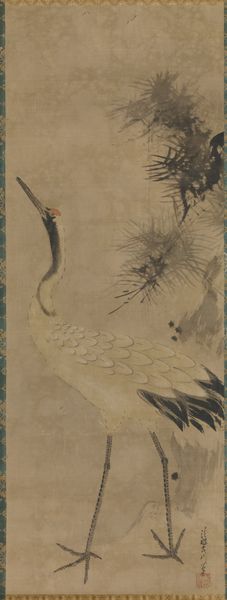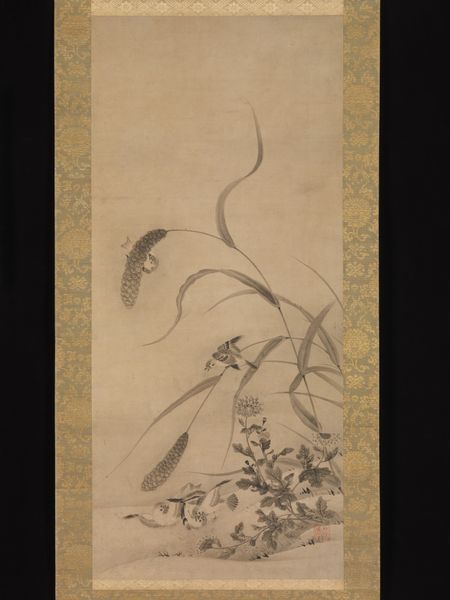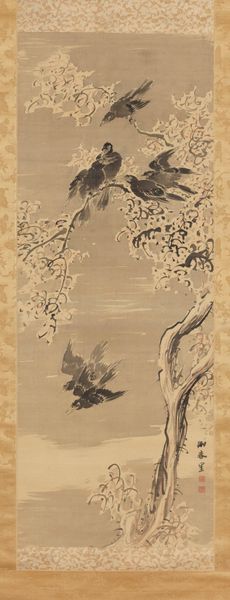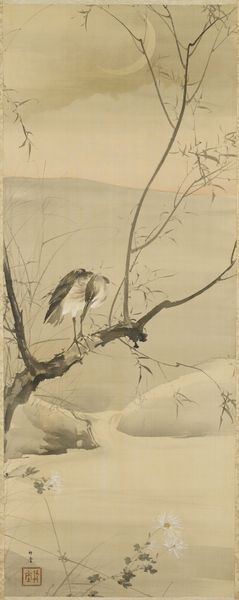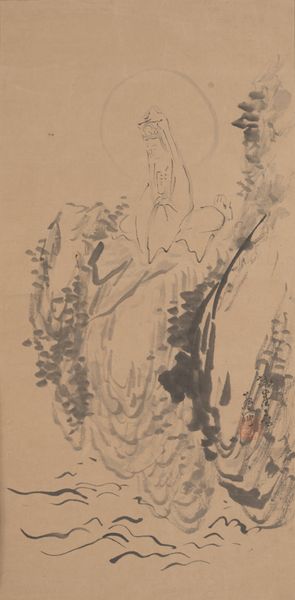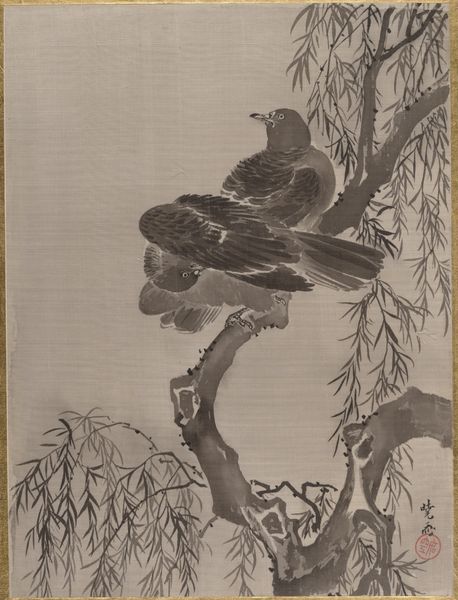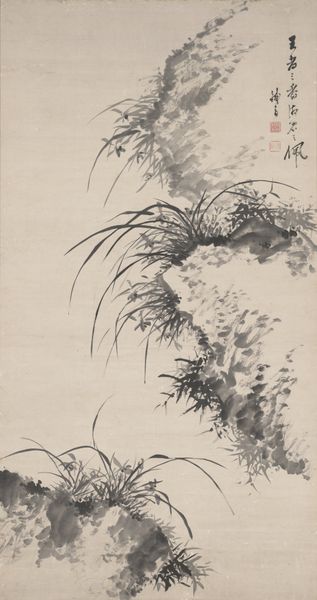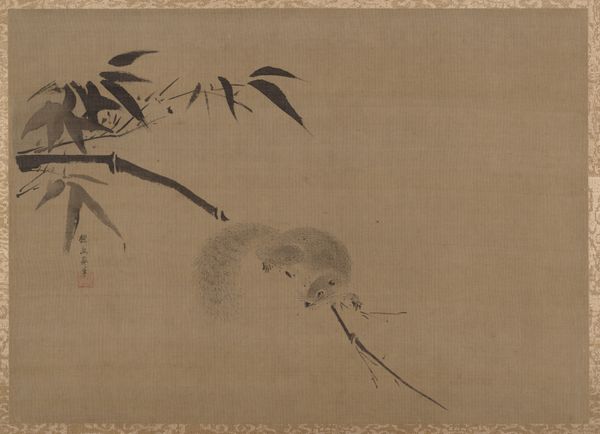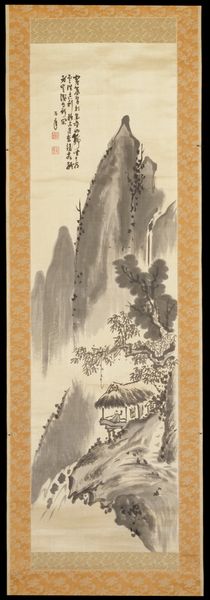![Crane with Bamboo [right of a triptych of White-Robed Kannon and Cranes] by Kano Tan'yū](/_next/image?url=https%3A%2F%2Fd2w8kbdekdi1gv.cloudfront.net%2FeyJidWNrZXQiOiAiYXJ0ZXJhLWltYWdlcy1idWNrZXQiLCAia2V5IjogImFydHdvcmtzL2ZlMDkyNzkxLTRjZTEtNGM4NS1hMDIxLTA1OTgzYjIxOWQ0OS9mZTA5Mjc5MS00Y2UxLTRjODUtYTAyMS0wNTk4M2IyMTlkNDlfZnVsbC5qcGciLCAiZWRpdHMiOiB7InJlc2l6ZSI6IHsid2lkdGgiOiAxOTIwLCAiaGVpZ2h0IjogMTkyMCwgImZpdCI6ICJpbnNpZGUifX19&w=3840&q=75)
Crane with Bamboo [right of a triptych of White-Robed Kannon and Cranes] c. 17th century
0:00
0:00
drawing, paper, ink-on-paper, ink
#
drawing
#
asian-art
#
landscape
#
japan
#
paper
#
ink-on-paper
#
ink
#
line
#
realism
Dimensions: 44 1/4 × 16 3/16 in. (112.4 × 41.12 cm) (image)20 3/4 × 76 3/4 in. (52.71 × 194.95 cm) (mount, without roller)
Copyright: Public Domain
Kano Tan'yū made this painting of a crane with bamboo, part of a triptych, using ink and color on paper. The materials speak to a long history of artistic practice in Japan. Paper, carefully made to receive the ink, is the ground for this elegant depiction. The artist's skilled handling of the brush is evident in the varying tones and textures, achieved through controlled application of ink washes. This technique requires years of training and practice to master, reflecting a commitment to refining one's craft. The choice of subject matter, cranes and bamboo, carries cultural significance, symbolizing longevity and resilience. This work is not just a depiction of nature, but a meditation on values, rendered through the artist's labor. Consider the time and effort involved in creating such a piece, from preparing the materials to executing the brushstrokes. This painting invites us to appreciate the artistry embedded in the process itself, highlighting the interplay between materials, skill, and cultural meaning.
Comments
minneapolisinstituteofart about 2 years ago
⋮
Avalokiteshvara, known in Japanese as Kannon, is one of the most popular deities in Zen Buddhism. From the 1300s through the 1500s, Zen painters in Japan frequently created monochrome ink paintings of Kannon relaxing in nature. Nearly 200 years later, a professional painter, Kano Tan’yū, borrowed from this long tradition for this triptych, showing the deity in the center resting on a boulder beneath a waterfall and gazing down at the waves below. As is common with devotional triptychs, the central deity is flanked by complementary images of birds, in this case cranes with bamboo and a pine tree.
Join the conversation
Join millions of artists and users on Artera today and experience the ultimate creative platform.
